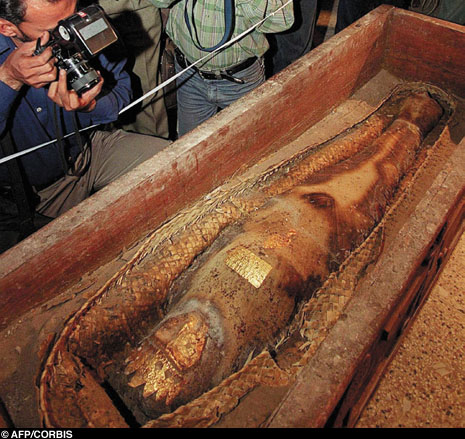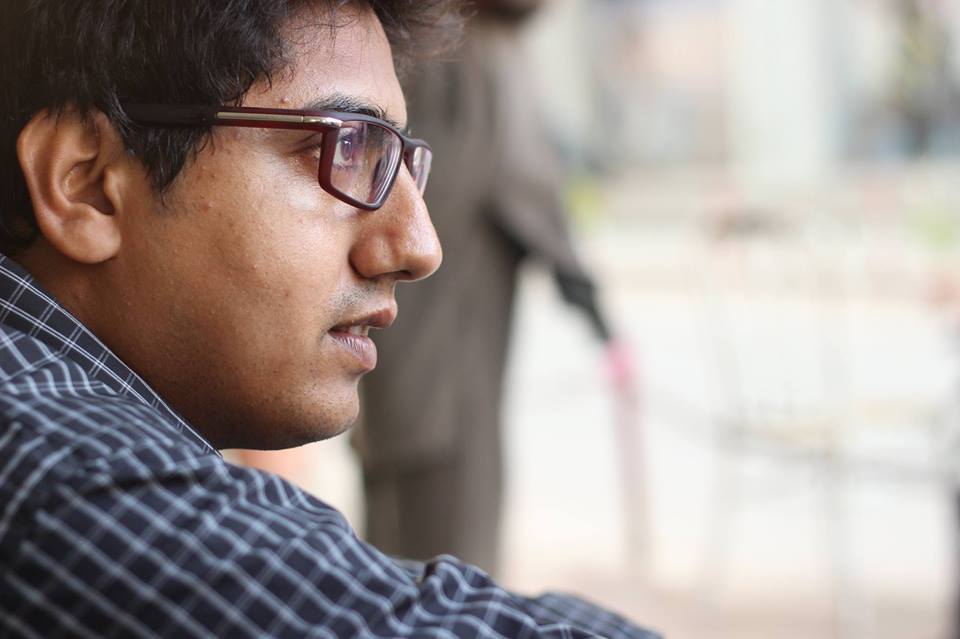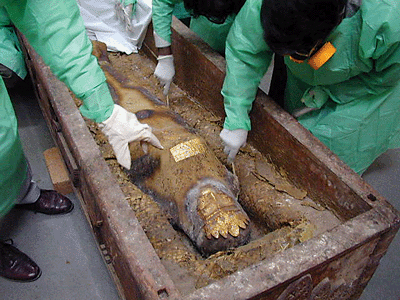It was a scorching day of October 2000, when Dr. Asma Ibrahim – an Archaeologist and a Museologist, received a phone call from a police station in Karachi; the caller introduced himself as Deputy superintendent Farooq Awan and said, “We have rescued a Mummy from smugglers.”
“What! A Mummy!! Did you really said this?” Asma said in a trembling voice as she had a student life dream to work on a Mummy. During a telephonic conversation, Asma assumed that police had got some misconception, as mummification is the specified art of Egyptians and Police officer was claiming that the mummy was recovered from a Baloch smuggler.
Finally, she reached out to the police, where the Mummy was kept in a separate room. Her wooden sarcophagus was opened, and the carved stone coffin was already removed from the body. She was wearing an exquisite golden crown and mask. Her body was wrapped in cloth stripes, as any Mummy could be, with an inscription on her breastplate that read, “I am the daughter of the great King Xerxes, I am Rhodugune.” She was laid on the reed mat in a coffin. Internal organs of the body were taken out in the same that the ancient Egyptians used to mummify their dead.

King Xerxes was the greatest ruler of the Achaemenid empire of Persia, ruling from 486 to 465 BC, so being a daughter of Xerxes, the mummy was supposed to be 2600 years old. Interestingly. Persians are not known for mummifying their dead as Egyptians used to do. So the discovery caught attention across the globe.
All the eyes were focused on the National Museum of Pakistan, where Mummy was shifted after recovering from smugglers. Dr. Ahmad Hassan Dani, a well-known Archaeologist from Quaid-e-Azam University, Pakistan, addressed a press conference and said,” Despite having no traces of mummification in Persia, she might have been an Egyptian princess married to a Persian prince, or a daughter of the Achaemenid king Cyrus the Great.
The government of Pakistan constituted an investigation committee consisted of Archaeologist Dr. Asma Ibrahim, Assistant Archaeological Chemist Touseef, Technical Officer Rafiq, and Expert of preservation Zubair Ahmad Madni. No one other than members of the committee was allowed to work on the mummy.
The team started its investigation on many aspects, including the analysis of Cuneiform text written on the breastplate, X-rays and CT scans of the body, technical analysis of the wooden sarcophagus and the coffin, and finally, radiocarbon dating of the objects on which Mummy was laid in her sarcophagus.

Dr. Asma contacted Agha Khan Hospital and Karachi X-ray for the CT scans and X-rays of the mummified corpse. While talking to Scientia, she said, “initially, the authorities were not ready for the medical examination of the corpse as who would take the responsibility of damages occurred during the medical examination, if it would be real.”
Once Agha Khan and Karachi X-rays finished their medical examination, they sent their reports to the national museum of Pakistan, which were not disclosed till April 2001. When Asma released her investigation report.
However, during the investigation, an Italian expert of Cuneiform script confirmed Iranian authorities for the script, and they demanded the return of the Mummy from Pakistan. Meanwhile, an expert of the Cuneiform language from American University issued a two-page report of the text. The first page consists of the actual translation of the text on the breastplate, and the second page of analysis listed several problems with the mummy’s inscription that led the scholar to believe that it is the author who penned down in such a manner inconsistent with Old Persian. He concluded the inscription was likely a modern falsification, probably dating “from no earlier than the 1930s.”
Crucially, the inscriber had used the later Greek version of the princess’s name Rhodugune, instead of the Persian Wardegauna. In the meantime, Asma analyzed the medical reports of the Mummy and found Several detailed operations common to Egyptian mummifications had been omitted during the mummification of the mummy, now famous as “Persian Princes.” The heart was not there in the cavity, which is significant in the ancient mummification process as it would be the medium for the resurrection of the dead.
Medical examinations, including computerized tomography (CT) scans and X-ray photographs of the body inside the mummy, unveiled that this was no ancient corpse but a woman who had died in the recent past and that her neck was broken. An autopsy confirmed that this woman may indeed have been murdered to provide a body for the fakers to mummify.
A portion of the Reed mat was also sent for the radiocarbon dating to Pakistan’s atomic energy commission, which confirmed that the mat is not more than fifty years old; all these shreds of evidence confirmed that the mummy was forged and made to sell in the illegal antiquities market.
“I was young and passionate conservator these days, and I was analyzing the Mummy from a far different perspective,” Said Zubair Madni during a telephonic conversation while remembering the days of investigation. He was a member of the team constituted for scientific investigation of the Mummy.

He told us that during the investigation, he drew several conclusions based on technical analysis and visual inspection, some of which are as follows;
Not only was the coffin new, but in some places, the varnish was also found on it. It was a modern varnish and barely 20-30 years old. It looked like some old wooden furniture was used to make this coffin.
The reed mat laid in the coffin and on which the mummy was enclosed in the sarcophagus was not ancient. This mat must have been barely a few years old. Close observation was enough to prove that it would not be correct to call that mat thousand years old. A technical study of sarcophagus also did not prove that it could be more than twenty-five years old.
Scientific and technical study and close observation also showed that the tools used to carve forms and inscriptions on the coffin wood were new.
Fiber identification proved that the fabrics of the mummy wraps were also modern. Items applied to these strips, such as honey, were also fresh.
All the above facts were proved to be correct after in-depth scientific analysis in foreign laboratories. Madni also said that while analyzing the situation, he observed that the art of mummification is unique and specific to Egypt. Logically, the inscriptions on the coffin of the mummy and all the accompanying items, including the ornaments placed on top of the mummy, should have been written in the ancient Egyptian script. In contrast, all of these inscriptions were found in Cuneiform script. People interested in archaeology know that no formal evidence of mummy-making has been discovered in Persia.
The daughter of the ruler to whom May was attributed, ruled a huge and rich empire. Logically the ornaments on Mummy’s body should have been large and very heavy. In contrast, these gold ornaments were so cheap and so delicate that they twisted when touched. How was it possible for a rich king’s daughter to be buried with such cheap and modest jewelry.
On April 17, 2001, Dr. Asma Ibrahim issued her 11-page report enclosed with all scientific examination reports declaring the Persian Mummy a fraud. Once known as Persian Princess now lost all the attention in her. Police lodged a murder case, which was never concluded.
Later, Edhi Foundation took custody of the body and announced in 2005, “it was to be interred with proper burial rites.” Foundation wrote several letters to Police and other government authorities for official permission but never answered. Finally, in 2008, the foundation carried out the burial in the graveyard of unidentified corpses.
Also, read: Under the fossils, a time machine exists
*Credit: W Kretschmer, K von Grundherr, K Kritzler, G Morgenroth, A Scharf, T Uhl, The mystery of the Persian mummy: original or fake?,
Nuclear Instruments and Methods in Physics Research Section B: Beam Interactions with Materials and Atoms, Volumes 223–224, 2004, Pages 672-675, ISSN 0168-583X,

Fawwad Raza is a Digital Journalist and working as a member Editorial team in ARY News. He is History graduate from University of Karachi, blogger and a passionate traveler. He also conducts various training sessions of digital Journalism for students and working journalists.

